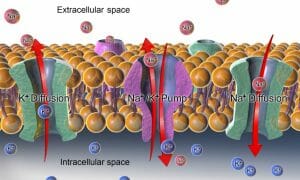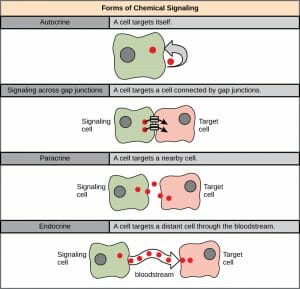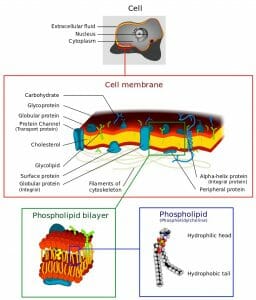Homeostasis at the cellular level is critical to maintaining homeostasis in the whole organism. Animal cells have several ways to help them stay in equilibrium.
Cell Membrane and Phospholipid Bilayer
The cell membrane functions as a boundary separating the internal cellular environment from the external environment. It is selectively permeable which means it lets some materials pass through but regulates the passage of other materials.
The phospholipid bilayer is a two-layered structure that makes up the cell membrane that surrounds the cell. It comprises phosphate molecules and lipid molecules with the hydrophobic ends of the lipid molecules facing inward and the hydrophilic phosphate ends facing outward. It is about 7.5 nm thick. Besides the phospholipid molecules, the membrane also contains carbohydrates, glycoproteins, protein channels, cholesterol, and filaments that make up a cytoskeleton and give support.
The two mechanisms by which molecules are transported across the cell membrane are active transport and passive transport. Active transport requires the expenditure of energy while passive results from the random movement of molecules. Osmosis and diffusion are two types of passive transport. In osmosis, water moves from areas of greater concentration to a lesser concentration until equilibrium is reached. It is the most important process by which water moves in and out of the cell. Small molecules pass through the cell membrane by diffusion, also using a concentration gradient.
The image above shows details of the phospholipid bilayer of the cell membrane.
Ion Transport Mechanisms
There are several ion transport mechanisms within the cell membrane that function to maintain proper levels of solutes inside and outside the cell. One of the most important is the sodium-potassium ATPase pump. This system uses the energy stored in ATP to pump potassium into the cell and sodium out of the cell. Another critical pump is the calcium ATPase pump which moves calcium out of the cell or pumps it into the endoplasmic reticulum. This transfer of ions back and forth across the membrane creates a membrane potential that drives the ionic currents. Also, water moves in and out of the cell based on the differences in the ion concentrations. This way, ion transport helps to regulate both the volume of the cell and the membrane potential.

The image above shows the components of a sodium-potassium pump in the phospholipid bilayer of the cell membrane.
Cellular Communication
There are three basic kinds of intercellular communication used to maintain homeostasis. The first is when direct contact occurs between the membranes of two cells and they signal to each other. The second is when cells use short range chemical signals over short distances. The third is long ranged signals that are secreted into the bloodstream and can be carried anywhere in the body.
Gap junctions are structures that lets cells communicate with each other in a process called cell-to-cell recognition. Embryonic development and the immune response are two examples of where this communication is used. Paracrine signaling refers to chemical signaling that changes the behavior of nearby cells. An example of this is the neurotransmitter acetylcholine that carries a chemical message from one nerve cell to another.
Hormones are how cells communicate over longer distances, known as endocrine signaling. An example is the secretion of insulin by the pancreas into the bloodstream which travels throughout the body to signal cells to take in glucose. A cell can also use chemical signaling on itself in a process called autocrine signaling. This type of cellular communication is seen with cytokine interleukin-1 in monocytes in the immune system. An external stimulus produces interleukin-1 which can bind to the receptors of the same cell that produced it.

The image above shows several types of chemical signaling that occurs between cells.
References
- Wong, E.V. (2009). Cells: Molecules and Mechanisms. Retrieved from http://www.axopub.com/wp01/2012/02/26/download-cells-molecules-and-mechanisms/
- Keener J., & Sneyd J. (2009) Cellular Homeostasis. In Mathematical Physiology. Interdisciplinary Applied Mathematics. 49-119. https://doi.org/10.1007/978-0-387-75847-3_2
How Do Cells Maintain Homeostasis

No comments:
Post a Comment